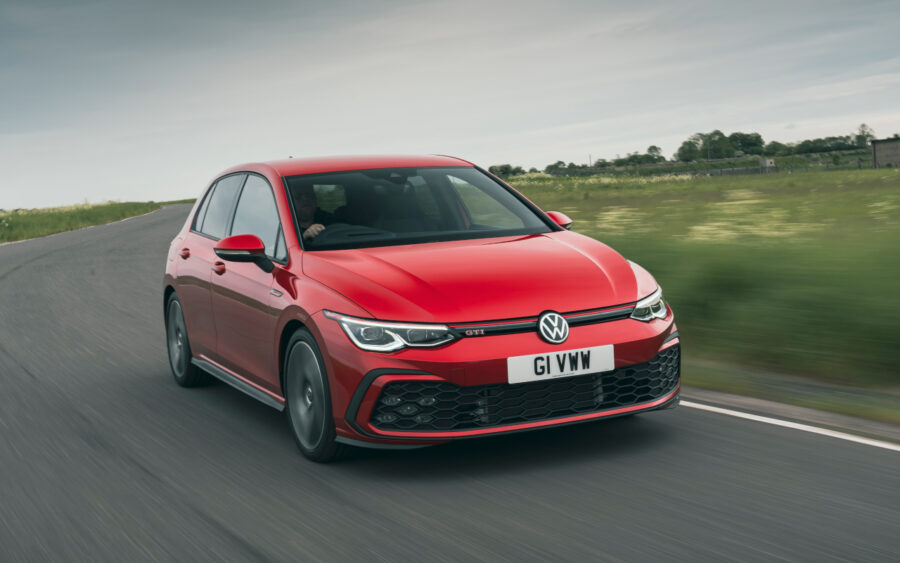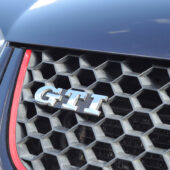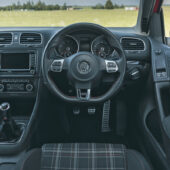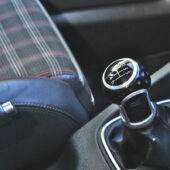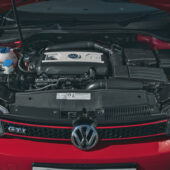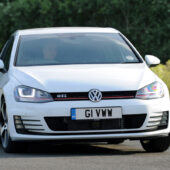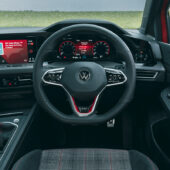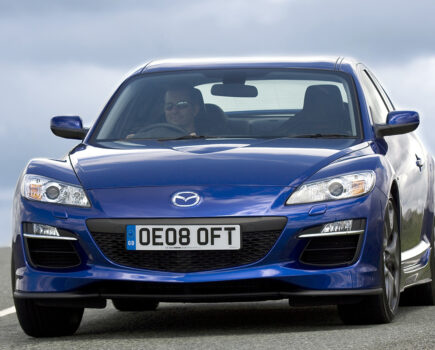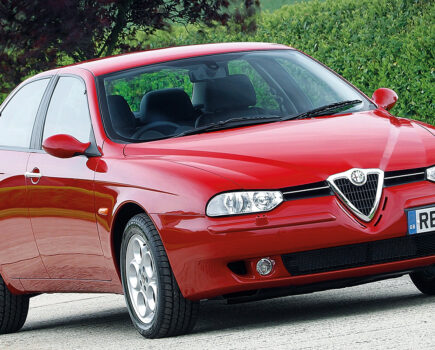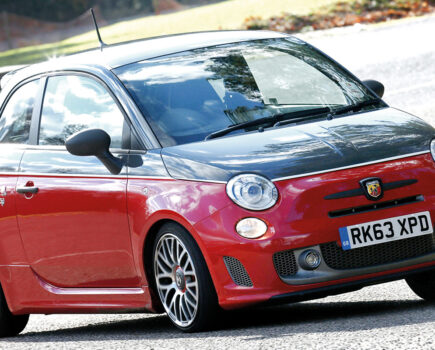As the Golf GTI prepares to go auto-only, we guide you through the modern generations from Mk5 to Mk8
Words: Paul Wager
If you want to read about the early history of the Golf GTI then there’s no shortage of material out there, but the basics are easy to get your head around:
engineers working on the Mk Golf had created a ‘Sportgolf’ as an after-hours project by dropping an Audi 80 engine into a Scirocco prototype. Management didn’t especially like the idea but sanctioned further development as a motor show concept. The GTI concept proved wildly popular at the Frankfurt show in 1975, became first a limited edition of 5000, then a mainstream production model and has been with us ever since.
It was extensively facelifted into the Mk2 in 1983, a twin-cam head was added in 1986 to help it stay competitive and the all-new Mk3 incarnation in 1992 saw it take on a new degree of sophistication. It lost its way with 1998’s lacklustre Mk4 but later recovered thanks to VW Group’s feisty 1.8 turbo engine.
Golf GTI Mk5
The launch of the Mk5 generation in 2003 saw the GTI enter a second chapter, employing turbocharging from the outset which took it from merely brisk to outright rapid with outrageous aftermarket tuning possibilities.
By the time the Mk5 arrived, the world had changed and for that we have to thank the Ford Focus which moved the handling game on massively. The upstart Ford featured independent rear suspension which was naturally incorporated into the Golf, while the bodyshell became bigger, more solid and generally more grown up. Indeed, VW’s technical material of the time points out that bodyshell rigidity was some 80 per cent better than the Mk4, itself not exactly floppy, thanks to a total of 70 metres of seam welding in the bodyshell compared to just five in its predecessor.
Power outputs had moved on too, which explains why the Mk5 debuted with nearly twice the output of the 1976 original, courtesy of a 2.0-litre, 16-valve turbo unit with VW’s ‘FSI’ direct injection technology which provided a nice round 200bhp. This was backed up with a suitably beefy 207lb.ft torque which, being a turbo engine, was available from as little as 1800rpm.
Despite the bigger body, the Mk5 still only weighted in at 1336kg, meaning that the 60mph sprint was ticked off in just 7.2 seconds with the new six-speed manual box. If that wasn’t quite quick enough, VW had another trick up its sleeve.

The low-volume R32 model had first appeared in Mk4 guise and debuted the sequential Direct Shift Gearbox. Essentially two gearboxes in one, keeping the next gear pre-engaged ready to be deployed with lightning speed as required, it was seen in the GTI for the first time here.
Taking just milliseconds to shift, it outpaced human brains and leg muscles to sprint to 60mph in just 6.9 seconds, while also turning conventional thinking on its head by edging ahead of the manual car on fuel economy.
Reinforcing the performance gap which had now opened up between the cooking models and the GTI, the Mk5 swapped the anonymous front-end style of lesser models for a bold honeycomb grille – with red pinstripes, naturally – which was paired with chunkier bumpers at both ends and a black outline for the headlights. Sitting on standard-fit 17-inch rims with the red-painted brake calipers peeping through the spokes, the effect was to set the GTI apart from the rest of the range, reinforced by the tailgate badging dispensing with the word Golf in favour of simply GTI.
The end result was a car which simply leapfrogged the competition and jumped right to the top of the class. Indeed, the Mk5 still impresses today as a car and the number still in daily use are testament to the solidity of construction. Yes, VW’s odd decision to leave a piece of foam inside the top of the front wing does mean many are suffering rusty front arches, but other than that they stand up very well.
After the Mk4, the Mk5 also seems noticeably larger, with a higher roofline and more spacious cabin, but in the details the GTI had regained its mojo. Whereas the interior of the Mk4 GTI seemed little different from a mid-range model, the Mk5 brought back the nice touches which set the GTI apart from the cooking models, among them a squared-off steering wheel, aluminium accents, sculpted sports seats with tartan inserts and of course the golf ball gearknob.
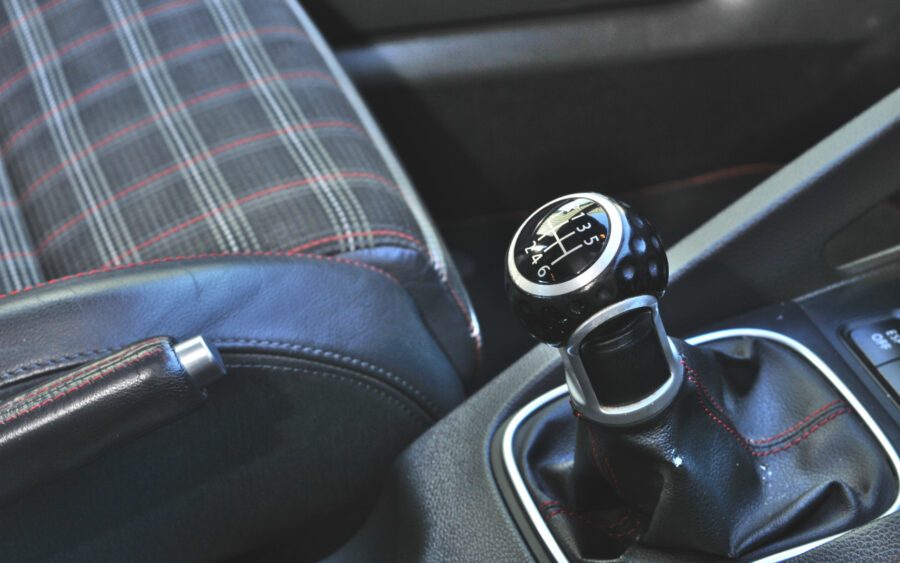
The Mk5 was also the first generation to provide twin tailpipes for the petrol models and although a turbo usually tends to mute any character from the exhaust note, VW managed to give the Mk5 a cheeky rasp ever so slightly reminiscent of the Mk1.
On the road, the Mk5 is tremendously competent, the innate conservatism of VW Group clearly having won through in a set-up which provided a linear power delivery rather than the lag-wait-rush of old-school turbo engines.
In fact, compared to the lunatic rev-happy Civic Type R and the Mégane 225, the GTI suffered by being almost too competent and simply not exciting enough.
In reality though, in traditional GTI style this made the Golf a far less tiring car to drive far and fast than the peaky Honda or Renault, its qualities deeper than the raw figures would suggest.
The Golf’s handling was more of the same: sharper than the lesser models thanks to firmer springs and dampers, plus recalibrated electro-mechanical steering to give it a heavier, more positive feel yet biased ultimately towards safe understeer. The firmer GTI set-up allows some adjustability on the throttle when really cracking on but the newly sophisticated rear end meant you wouldn’t see that trademark cocking of the inside rear wheel. In other words, sporting enough to be fun but also easy to live with.
It was this ability to blend into the background when not being driven on the ragged edge that made the Mk5 generation the best to that point and explains why the Mk6 didn’t offer a massive jump.
Golf GTI Mk6
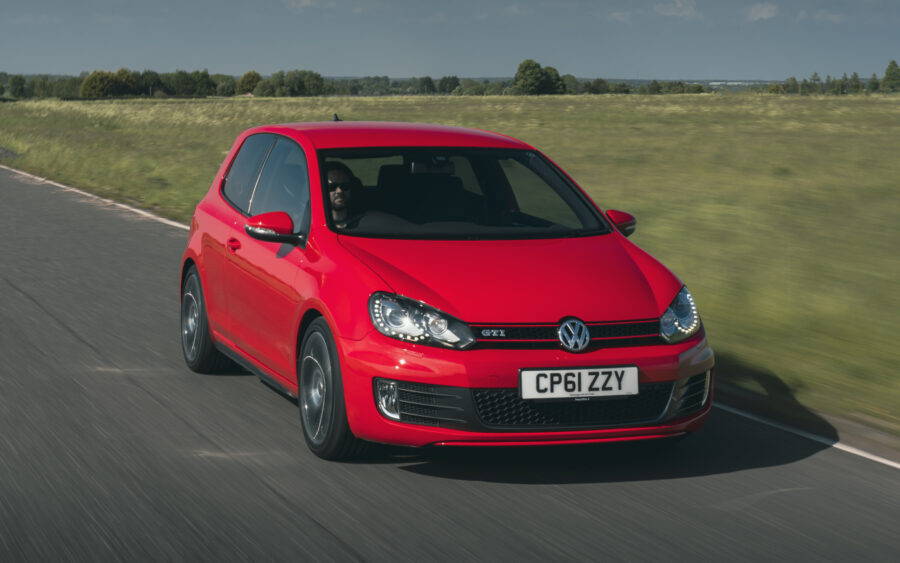
In fact, much like the jump from Mk1 to Mk2, the Mk6 was actually a facelift of the Mk5, the opportunity taken to address its few shortcomings. A restyled front and rear prepared us for later generations and the dashboard received a new moulding with new tech offerings but any Mk5 owner would have felt right at home when it arrived in the UK in 2009.
Mechanically, the GTI was very similar to the outgoing model, but the EA888 2.0-litre turbo engine was renamed TSI from the previous T-FSI to reflect significant internal changes, including modified pistons, oil pump, fuelling and induction.
The result was a 10PS increase over the Mk5, maximum power now 210PS from 5300rpm which dropped the 0-60 time to 6.9 seconds but more importantly in the marketplace reduced CO2 emissions from 189g/km to 170g/km, dropping the GTI into a lower company car tax bracket.
The Edition 35 meanwhile was available with a 230PS engine derived from the EA113 unit used in the Golf R, identified by a standard-fit bodykit, 18-inch wheels and special badging.
As before, the transmission choices were a six-speed manual or DSG, with VW predicting that around half of UK buyers would choose the DSG and 75% of GTIs would be the five-door.
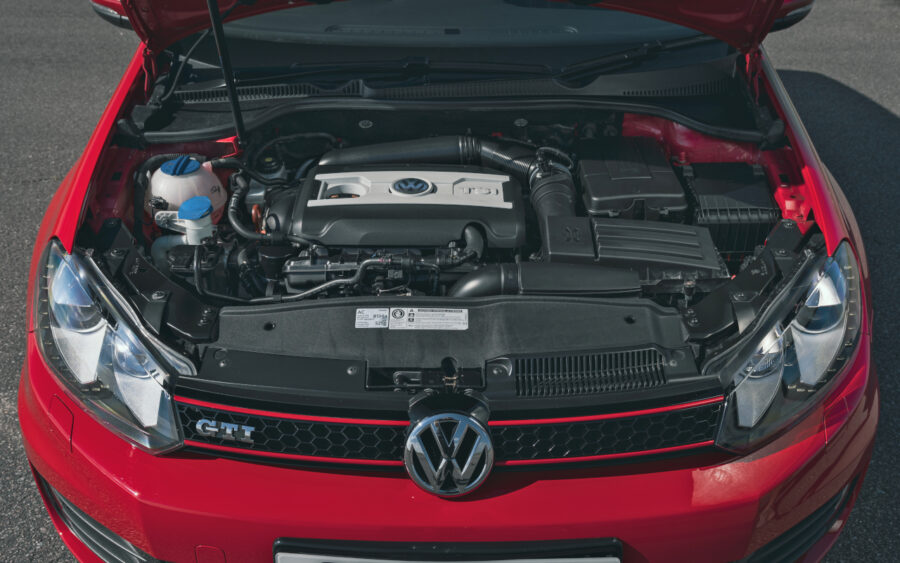
As usual, the GTI received uprated suspension sitting 22mm lower at the front and 15mm at the rear, while Adaptive Chassis Control was offered as an option for the first time, allowing ‘normal’, ‘comfort’ and ‘sport’ settings for suspension, steering and throttle mapping.
It was very much a cautious evolution of the Mk5 and on the road, the Mk6 was very similar to drive, the extra 10PS really not making itself felt as much as the new ‘XDS’ which was marketed as an electronically controlled differential but which was in effect a cross-axle electronic traction control. It works by using the car’s ABS and stability control sensors to determine when an inside front wheel is about to lift and lose traction, applying the brakes at that point to increase traction on the opposite side. VW’s marketing material reckoned that as well as assisting traction, the system also compensated for the inherent understeer of a front-drive car, giving it a sharper turn-in and improved stability.
In reality, on the road it translates to slightly less scrabbly progress under full-bore acceleration and is really the major point of difference between Mk5 and Mk6. Certainly for anyone viewing used examples today, the cars are so close in character that buying on condition is the best advice.
Golf GTI Mk7

After the gentle evolution which took us from Mk5 to Mk6, the next generation was a rather bigger leap. Debuted in 2014, the Mk7 GTI employed VW’s modular ‘MQB’ platform, designed to standardise componentry in the transverse-engined vehicles across the VW Group, from Polo to Passat.
The fact that the MQB platform was designed to accommodate petrol, diesel, hybrid and pure electric powertrains showed how the world was changing, but thankfully the GTI remained true to the proven recipe.
Impressively, the new platform made the Mk7 GTI 100kg lighter than its predecessor, the weight saving split equally between bodyshell and engine.
The engine itself remained the EA888 2.0-litre turbo, now modified in its third generation with a redesigned cylinder head incorporating water-cooled exhaust gas cooling, variable valve timing, a revised injection system and electronic cooling system for improved thermal management.
The changes were designed to meet Euro 6 emissions standards but had the happy by-product of boosting power by a further 10PS to 220PS, with a new Performance option rated at 230PS which also added an electronic locking differential to the mix.
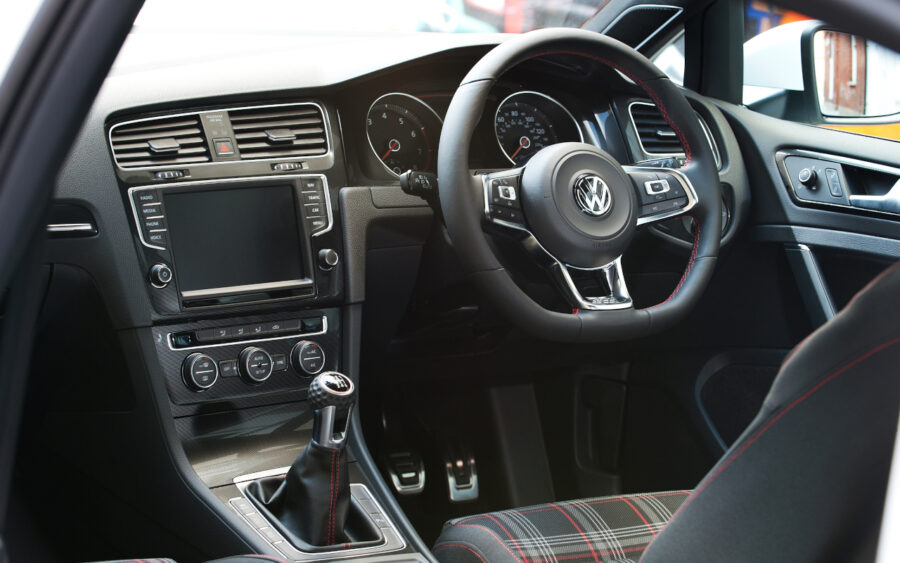
The suspension was similar in its basics to the Mk6, being by MacPherson struts front and multi-link independent rear, with the GTI sitting 15mm lower than regular models. The ACC had now become DCC (Dynamic Chassis Control), once again offering ‘comfort’, ‘normal’ and ‘sport’ modes by acting on the damper valves according to signals from wheel movement sensors and accelerometers. The electro-mechanical steering rack was further refined to offer a variable ratio.
The Mk7 moved the game on once again, just as rivals were catching up and a facelift in late 2016 to create what GTI fans know as the ‘7.5’ reinforced its credentials. Styling tweaks and LED lamps front and rear subtly changed its appearance, while the big news was the 230PS Performance engine becoming the standard GTI spec, while the Performance option now boasted 245PS.
On the inside, changes centred around onboard tech, including a larger infotainment screen and trim details.
So did the advanced Mk7 move the game on as much as VW’s hype claimed? Well there’s a Mk7.5 DSG sitting on the drive as I type this and I can tell you there’s precious little that can stay with it. You need a serious performance car to beat it in a straight line and even proper exotics need a committed (and skilled) driver to keep up with a hard-driven GTI on a twisty road, while it’s also happy to potter down the road on the school run. There’s also room for the whole family, the shopping and the dog, while driven sensibly it’ll turn in a respectable 40mpg.
Golf GTI Mk8
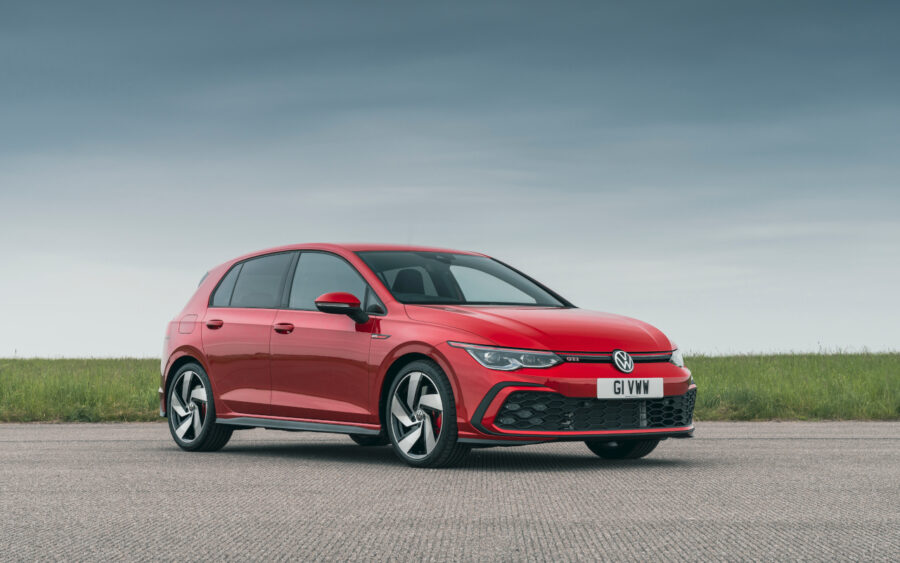
Like I said, there’s previous little can live with that, so how does the Mk8 stack up? Well, if owner’s reports are to be believed, not as well as you might expect. As usual it’s essentially a facelift of the Mk7, the platform updated under the name MQB Evo so in theory the Mk8 should offer all the good bits of the older car in an updated package but owner feedback suggests VW’s risked fiddling with an established formula and dropped the ball in some important ways.
Chief among these was the use of an entirely new electronic architecture, but unlit touch controls throughout the interior saw owners complaining of poor usability, while reliability was also criticised.
Happily, the important bits were still there: the 2.0-litre TSI motor now produced 245PS and came with the locking diff as standard, as well as the XDS and DCC functions. Transmission options included the familiar six-speed manual or a new seven-speed DSG, while the familiar GTI styling details were all present and correct.
VW’s own press material claimed the Mk8 could lap the Nürburgring significantly faster than the Mk7, which bears witness to the various suspension tweaks. Technically then, the latest car is the best… but which do you choose as a private buyer?
Our verdict
It’s easier than you might think. Yes, in absolute terms the Mk8 should be the better car but in reality fails to improve on the excellence of the Mk7 in any meaningful way. Which is why many, myself included, reckon peak Golf GTI came with the late Mk7.
If your budget doesn’t quite stretch that far though, then the Mk5 and Mk6 still won’t disappoint. Of the pair, the Mk6 is perhaps the better bet for long-term ownership, but something like an Edition 30 Mk5 is already gaining collector status. Find a standard one, keep it up to scratch and you won’t regret it.

